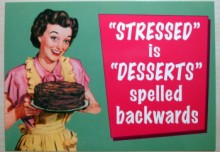At CCM, home and safety are as important to us as to you, so it’s no surprise that it’s a prevailing topic of our discussion. I have asked Gregory Peebles to talk about this topic from the vantage point of his experience. Gregory is both a Certified Senior Advisor (CSA) and Certified Dementia Practitioner (CDP) whose work focuses on helping aging adults and folks with limited independence by providing resources and support to help them discover and lead their best life – at home. An Associate Care Manager, Gregory has been a part of my team for over a decade. – Charlotte
Home.
There’s no place like it, but it’s also very conveniently located wherever you hang your hat.
As nice a thought it is that “home” is a physical place we can go, when we look at that thought more closely, it turns out to be not nearly as nice as we first imagined. Our insistence on home being an actual place isn’t just silly misstatement; it’s a false belief that can easily get in the way of our ability to discover new happiness.
We imagine “home” existing as it always has in our memories: strong, immovable, untouched by time. It holds us safe inside, protecting us while we watch the world transform at a dizzying speed into a place we no longer recognize. It’s easy to see why we yearn for such a harbor against change.
 That place doesn’t really exist, though. Even if there remains a physical house from childhood where parents still live, “home” is not a physical building: it is a mental place, constructed not of wood or stone, but of our memories and feelings. Consequently, when we visit the mental place we call “home”, safety is usually one of the first feelings to come to mind.
That place doesn’t really exist, though. Even if there remains a physical house from childhood where parents still live, “home” is not a physical building: it is a mental place, constructed not of wood or stone, but of our memories and feelings. Consequently, when we visit the mental place we call “home”, safety is usually one of the first feelings to come to mind.
When folks say, “I want to go home,” what they’re really telling us is that they want to feel safe again. We feel safest when we know. Not surprisingly then, where we once lived for a long time feels the safest. But, like the false idea that “home” is a literal place, is it possible that we could also be wrong about being safe in our own homes? Absolutely.
In case you can’t tell yet, this post is gently getting us ready to talk about denial: denial that change is a necessary part of living; denial that our circumstances are ultimately beyond our control; denial that we are at last, mortal. As we age, inconveniences in the home can turn into safety hazards. As we watch our parents age, we begin to feel deeply our own mortality and—if we’re not careful—to slip into a pattern of denial, the manifestation of which is the attempt to keep life as it exists in our memories perhaps longer than is advised. However, while this may feel psychologically safe, it may also be physically the most dangerous choice to make on behalf of our loved ones. Yet we rightly want to keep our lives free of disruption for as long as we can. So how can we strike the balance and keep our loved ones safe and in that special place we call “home”?
In our next blog, we’ll talk about what makes a home a safe place for aging adults, including how to continue to ensure protections for the loved ones who depend on you. Be sure to come back and we’ll give you what we know.
Charlotte Bishop is a Geriatric Care Manager and founder of Creative Care Management, certified professionals who are geriatric advocates, resources, counselors and friends to older adults and their families in metropolitan Chicago. Please email your questions to info@creativecaremanagement.com.




